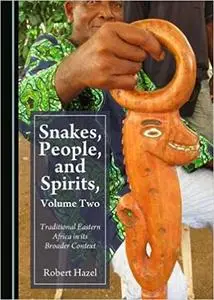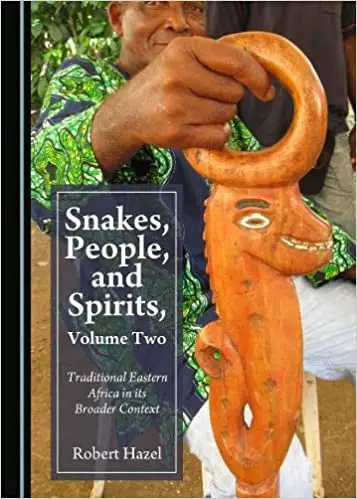Robert Hazel, "Snakes, People, and Spirits, Volume Two"
English | ISBN: 152753779X | 2019 | 190 pages | PDF | 975 KB
English | ISBN: 152753779X | 2019 | 190 pages | PDF | 975 KB
This two-volume publication offers an in-depth analysis of ophidian symbolism in eastern Africa, all the while setting the topic within its regional and historical context: namely, the rest of Africa, ancient Egypt and Mesopotamia, the Greek world, ancient Palestine and Arabia, medieval and pre-Christian Europe, as well as ancient and contemporary India. Through the ages, most of those areas must have had connections with eastern Africa. No animal species has impressed mankind more than the snake. This was clearly borne out by traditional eastern Africa, the area to which this second volume is devoted. In this study, eastern Africa encompasses not only contemporary Uganda, Kenya, and Tanzania, but also Sudan, South Sudan, Ethiopia, Somalia, Eritrea, and Djibouti, as well as peripheral areas belonging to central and southern Africa. This vast area is peopled by communities of diverse linguistic and cultural backgrounds, including Nilotes, Cushites, Semites, Bantus, and a few Khoisan-speaking groups. Ophidian symbolism was as pronounced, rampant, and far-reachingif not more soin that part of Africa as anywhere else on that continent and perhaps in past civilisations as well. Just as in the wider regional context, snakes were believed to be long-lived, closely connected with holes and caverns, trees and water, and life and death, and credited with a liking for milk. Eastern Africa showed various instances of phantasmagorical serpents and of sacred or mantic snakes. Snake-related witches, snake-charmers, snake-totems, and ophidian-like ritual leaders were very much part of the scene. Expectorating elders were assimilated to spitting ophidians. These features are shown here to be typically wide-ranging in eastern Africa and are examined in detail. The final chapters focus on a few communities of southern Abyssinia, notably the Oromo, an important group that has fascinated European travellers, missionaries, and social science specialists over a period of 150 years. The extremely rich Oromo ethnographic record lends itself to full-circle analysis. These chapters endeavour to make a significant contribution to the study of the prominent but mysterious Oromo, Konso, and Burji snake priests. Overall, these two volumes show that African snake symbolism broadly echoed the diverse representations of ancient civilisations.
Read more



